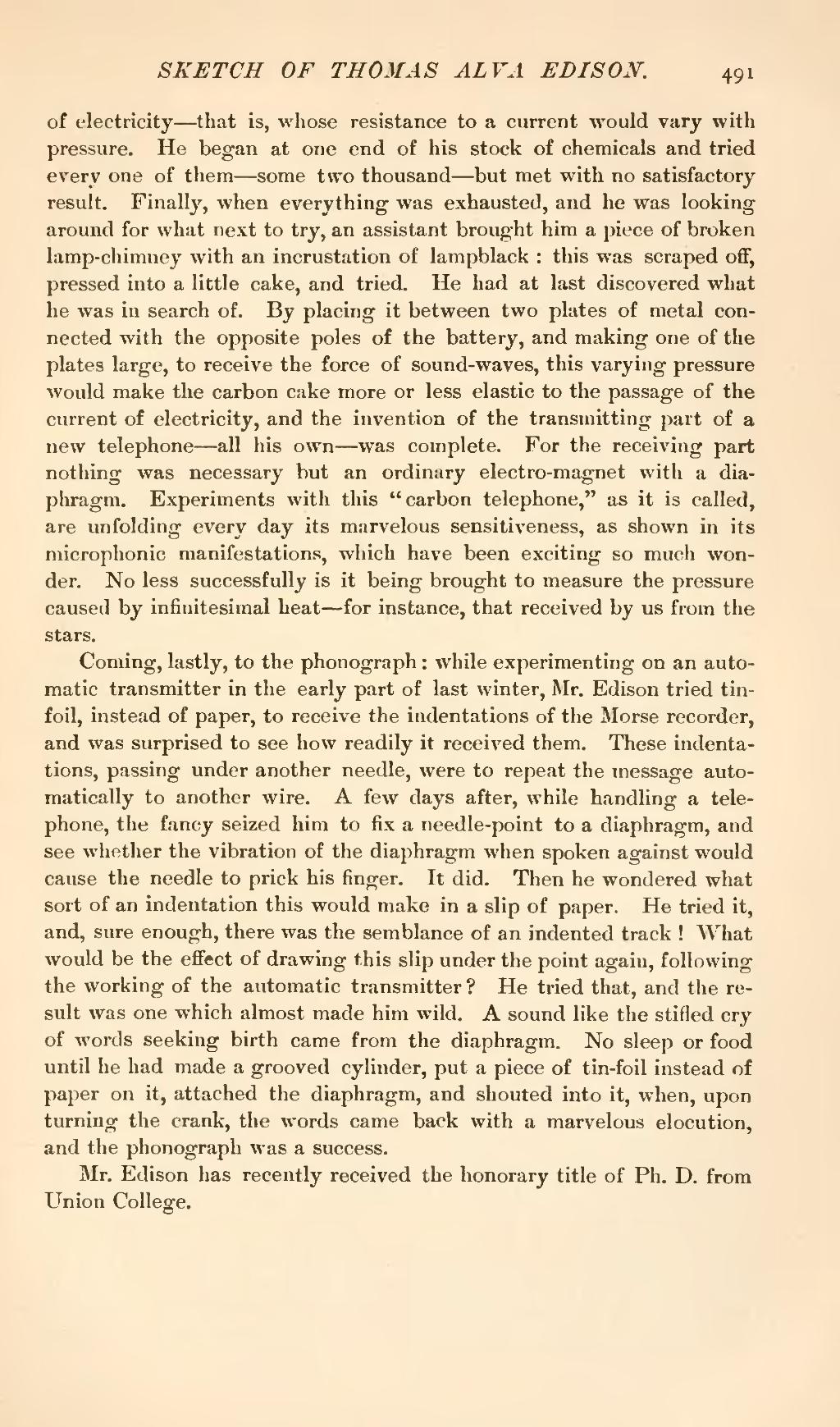of electricity—that is, whose resistance to a current would vary with pressure. He began at one end of his stock of chemicals and tried every one of them—some two thousand—but met with no satisfactory result. Finally, when everything was exhausted, and he was looking around for what next to try, an assistant brought him a piece of broken lamp-chimney with an incrustation of lampblack: this was scraped off, pressed into a little cake, and tried. He had at last discovered what he was in search of. By placing it between two plates of metal connected with the opposite poles of the battery, and making one of the plates large, to receive the force of sound-waves, this varying pressure would make the carbon cake more or less elastic to the passage of the current of electricity, and the invention of the transmitting part of a new telephone—all his own—was complete. For the receiving part nothing was necessary but an ordinary electro-magnet with a diaphragm. Experiments with this "carbon telephone," as it is called, are unfolding every day its marvelous sensitiveness, as shown in its microphonic manifestations, which have been exciting so much wonder. No less successfully is it being brought to measure the pressure caused by infinitesimal heat—for instance, that received by us from the stars.
Coming, lastly, to the phonograph: while experimenting on an automatic transmitter in the early part of last winter, Mr. Edison tried tinfoil, instead of paper, to receive the indentations of the Morse recorder, and was surprised to see how readily it received them. These indentations, passing under another needle, were to repeat the message automatically to another wire. A few days after, while handling a telephone, the fancy seized him to fix a needle-point to a diaphragm, and see whether the vibration of the diaphragm when spoken against would cause the needle to prick his finger. It did. Then he wondered what sort of an indentation this would make in a slip of paper. He tried it, and, sure enough, there was the semblance of an indented track! What would be the effect of drawing this slip under the point again, following the working of the automatic transmitter? He tried that, and the result was one which almost made him wild. A sound like the stifled cry of words seeking birth came from the diaphragm. No sleep or food until he had made a grooved cylinder, put a piece of tin-foil instead of paper on it, attached the diaphragm, and shouted into it, when, upon turning the crank, the words came back with a marvelous elocution, and the phonograph was a success.
Mr. Edison has recently received the honorary title of Ph. D. from Union College.

